Some years a go I went searching for a small caravan that I could tow behind my Land Rover but also my little Subaru sedan and any other medium sized car that I happened to be driving at the time. I was after something small with plenty of head room which was wide enough to comfortably sleep across. Because I was intending to tow it with the Land Rover and go cross country I wanted something very light and very strong, so a steel frame was a must, as was a very sturdy chassis. This left only one suitable candidate, the Carapark. Carapark were an Australian caravan manufacturer that built the iconic tall, boxy aluminium vans which were common throughout the 50’s and 60’s in Australia. Their practicality often saw the larger vans being used as offices and accommodation for road crews, with special purpose and modified vans being used to service the outback as mobile dentists and doctors facilities.
After a furious ebay bidding frenzy I wont the auction on a Carapark Twelve Nine, as the name would suggest this van is 12 foot, 9 inches long excluding the drawbar. The only problem with winning the auction was that the van was located in Brisbane, so I borrowed a friends Toyota Camry and headed up there. The van had been sitting under a shed for what looked like close to 40 years virtually untouched so was in incredible condition for its age. The curtains were stiff and would turn to powder when touched and the paint had gone chalky, but otherwise the van was a perfect time capsule.
There were however signs that the van was not completely original, the front seats had been added to, and the original table had been swapped out for a small square thing to make room for the modern fridge. The rear window and outside oyster light had also been added after the fact.
It was a great trip back, the 4 cylinder Camry pulled it well staying at the 100 km/h with no troubles. The 50 year old crossply tyres did however suffer and I ended up pulling into a small country town and having a new set and a spare put on. While I was waiting I decided to repack the wheel bearings and grease up all the shackles, then onward to Melbourne.
Upon getting the van back to Melbourne I started checking over it and looking for leaks and damage. I spotted that the rivet shanks from the pop rivets along the rear seam had rusted and dropped out allowing water to leak into and run along the roof. I decided to drill out and re-rivet the whole of the van roof using sealed type aluminium rivets. I then removed the internal plywood panels from the leaking section to search for any damage to the frame, as it turned out there was only a minute amount of surface rust along the inside of the window sill which I wire brushed off, acid treated and then red-oxide primed. The steel chassis of the van looked like it had originally been painted with a red lead primer, although extremely toxic, this primer is insanely effective at rust prevention and seems not to flake or create dust so I felt safe leaving it.
I then started stripping out anything that could be easily removed and painted separately. I also removed the original bench top surface and linoleum tiles.
After a good sanding I managed to match the original colours perfectly and gave everything a nice coat.
The inside of the van also got a thorough sand and a nice fresh coat of paint in its original colour.
I decided to put cork tiles down on the floor instead of the original linoleum as I wanted something soft and cheerful to walk on, linoleum reminds me of old kitchen and corridors floors so I decided to avoid it.
Re-laminating the benches and splashback, I managed to find a matching colour at my local laminate supplier which came as a bit of a surprise.
I had to make an enclosure out of plywood and laminate to cover the vent from the fridge. The edges were covered in the same aluminium edging as used throughout the van.
I ended up making a brand new table from plywood and hardwood with a nice cutout so as to provide access around the fridge. The aluminium edging was some contemporary carpet edging that I cut down using a router, I think it came up quite period.
A few nights spent on the sewing machine re-upholstering the couch and sewing the nanosuede seat cushions turned out pretty well. I even made some new curtains out of some raw cotton bead spreads that I had laying around unused. I think it turned out quite nicely and makes for a cosy space.
The chassis and draw bar were given a wire brushing and a coat of shiny new silver frost epoxy enamel.
The van was given a good polish with the electric buffer and aluminium polishing compound before some Ford Model A stainless steel replica tail lights were added, I chose these as they are simple, durable, easy to get lenses for and look great.
More polishing, this took quite a while as I was removing over 40 years of accumulated corrosion and neglect, mag wheel cleaner worked quite well at removing heavy stains from the aluminum.
Taking the van to get registered.
I finally got around to installing a solar panel on the roof using the original rivet holes, I ran the wires under the hatch seal so that no water could run in during heavy rain.
Under the seats I installed a sealed lead acid deep cycle battery and an appropriate selection of hardware. There is a Ctek mains battery charger for charging the battery when the van is connected to mains, there is also a Ctek DC to DC battery charger for charging the battery from the solar panel and from power supplied through the trailer plug from the tow vehicle. The DC to DC charger draws 15 amps under full load, so running a 6mm wire (20 amp rating) from the car battery to the trailer plug is more than adequate. I switched the electricity to the supply wire using a standard automotive relay triggered from the cars ignition system so that the car battery doesn’t accidentally get flattened when the car is not running. The supply wire feeds into the two redundant pins on the trailer plug as I have a 7 pin plug and socket but only use 5 wires for lights and signals, this provides a very clean and tidy single plug solution. There is also a small pure sine wave inverter for powering all the power points when the van is running of 12 volts, this is also used to keep the fridge running when the van is traveling along powered from the car. The low voltage cutout module ensures that the lights and appliances can’t flatten the battery past safe voltages if forgotten on.
The top rotary switch has been modified with a three way industrial three phase internal switch mechanism. This allows power to be turned from 12 volts to off to 240 volts. When switched to 12 volts the power points are routed through the inverter, and the mains battery charger isolated, and the internal light switches routed to the 12 volt bulbs. This system negates the need for two sets of light switches and makes the transition seamless. The triple bank of switches operates the internal and external lights while the two top switches operate the inverter and the clearance lights.
The final touches being the addition of some Australian Johnson Ware crockery in matching colours.
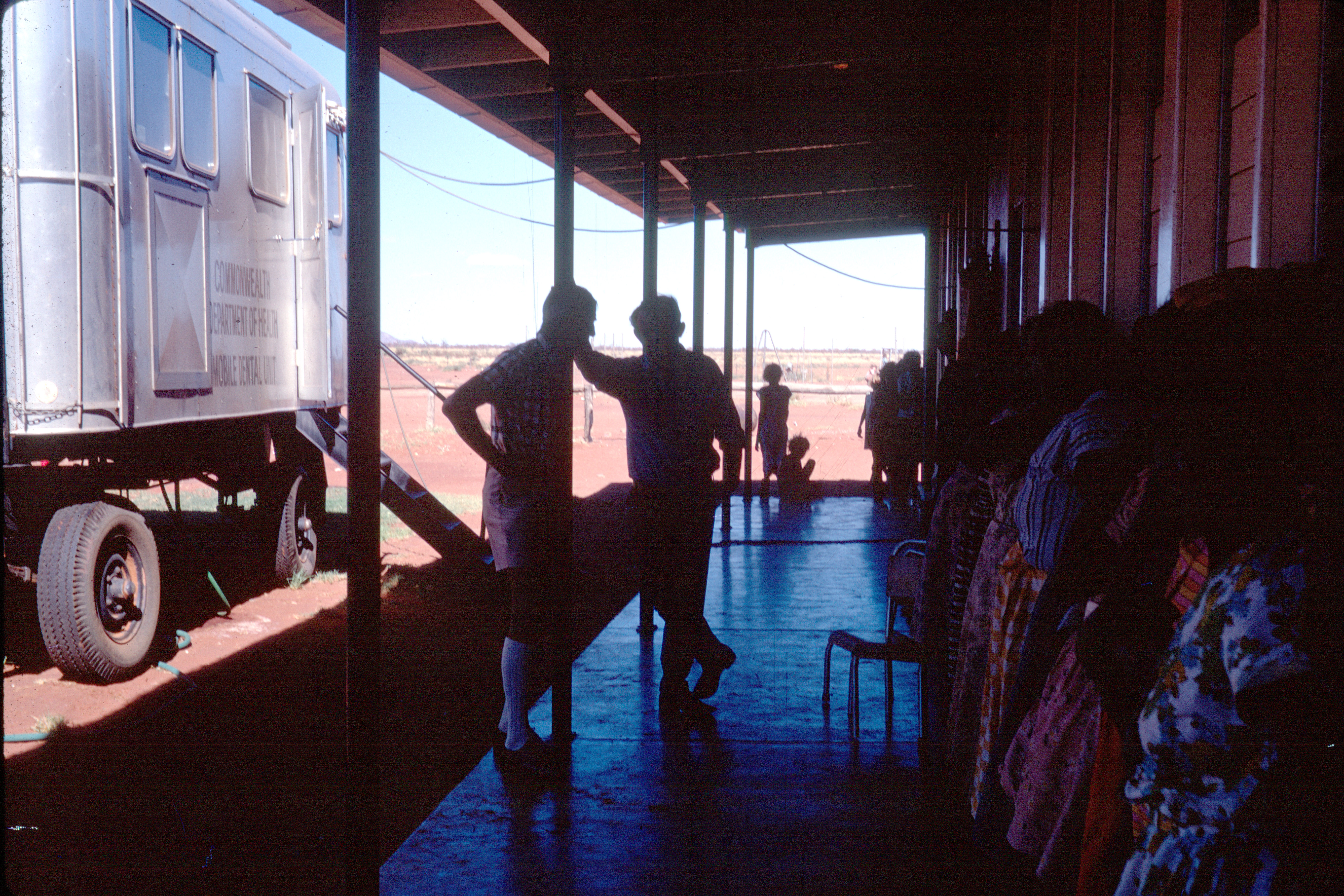
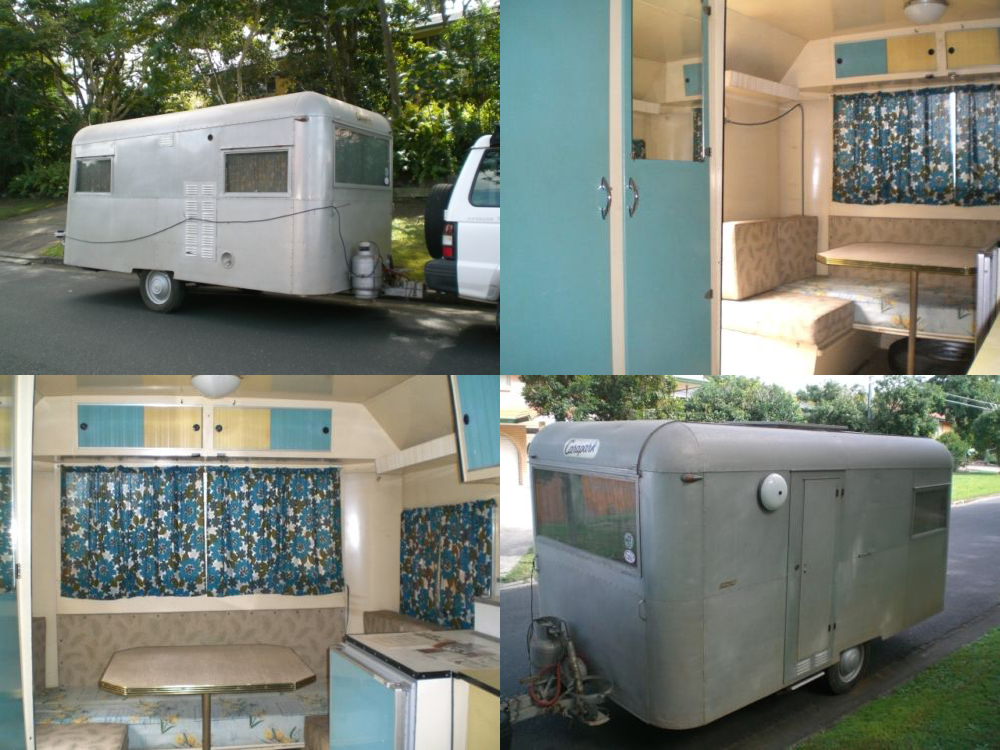
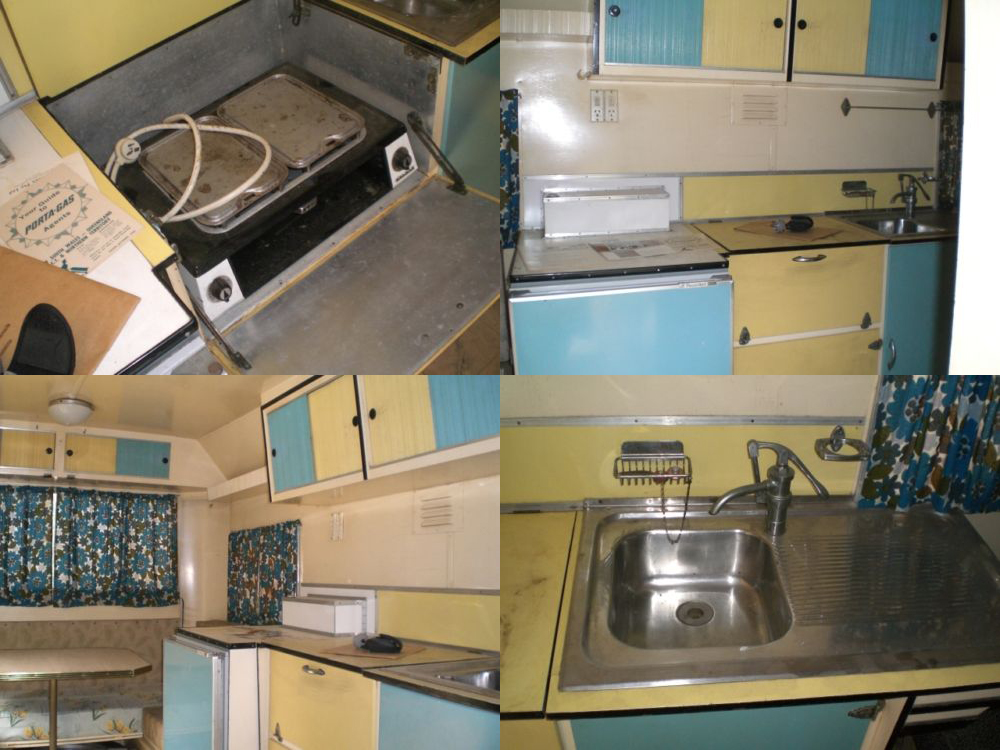

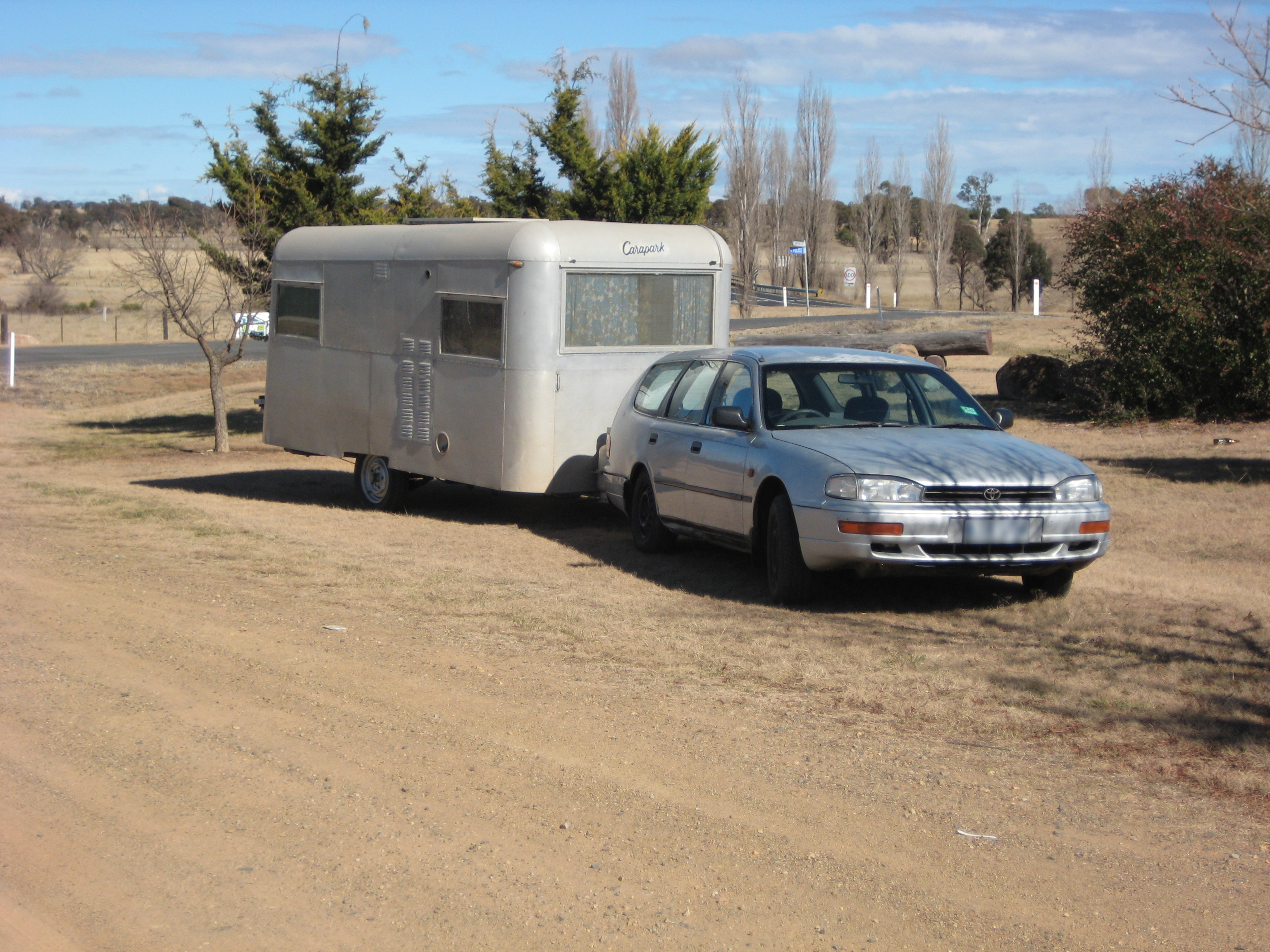
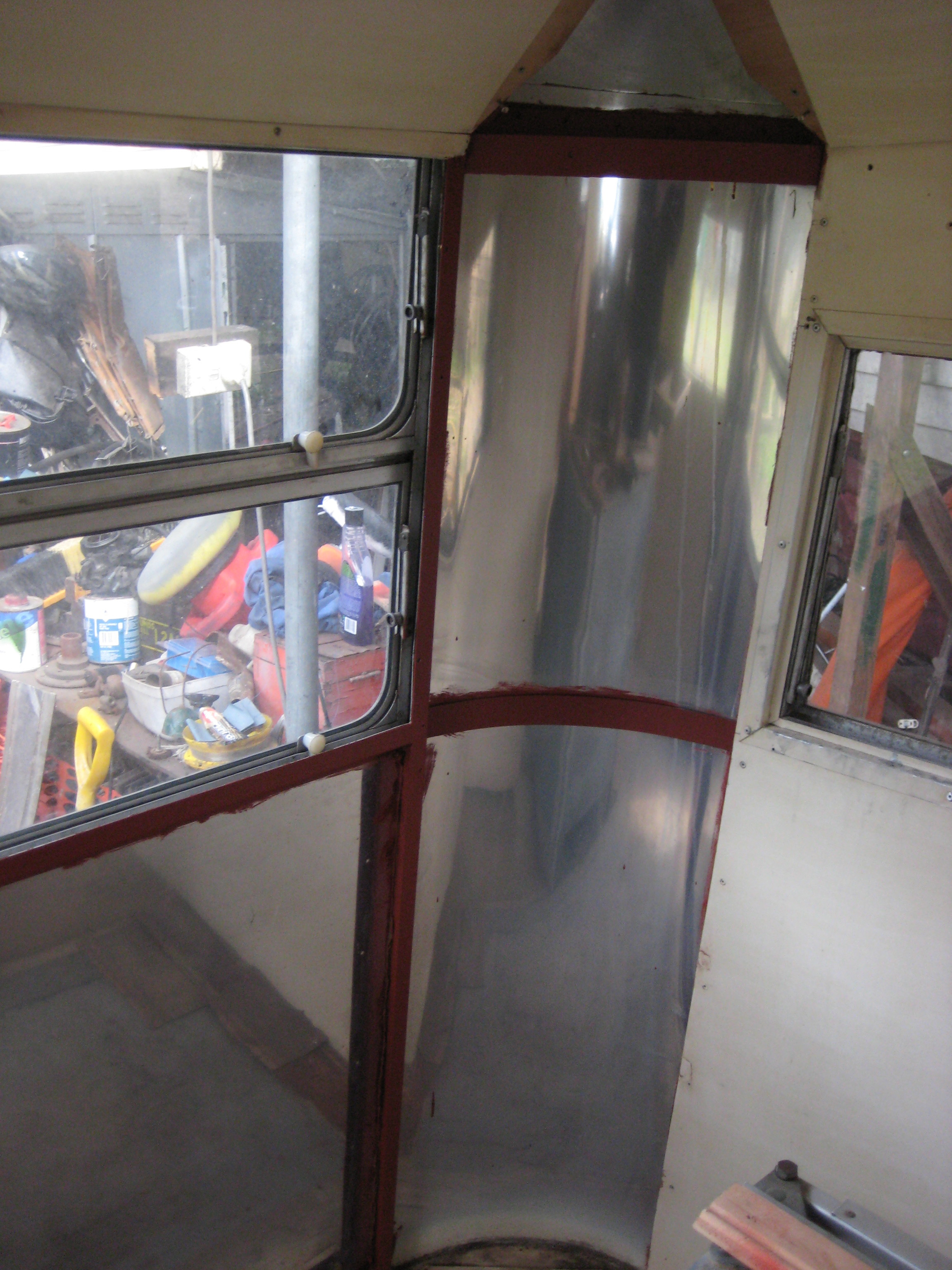

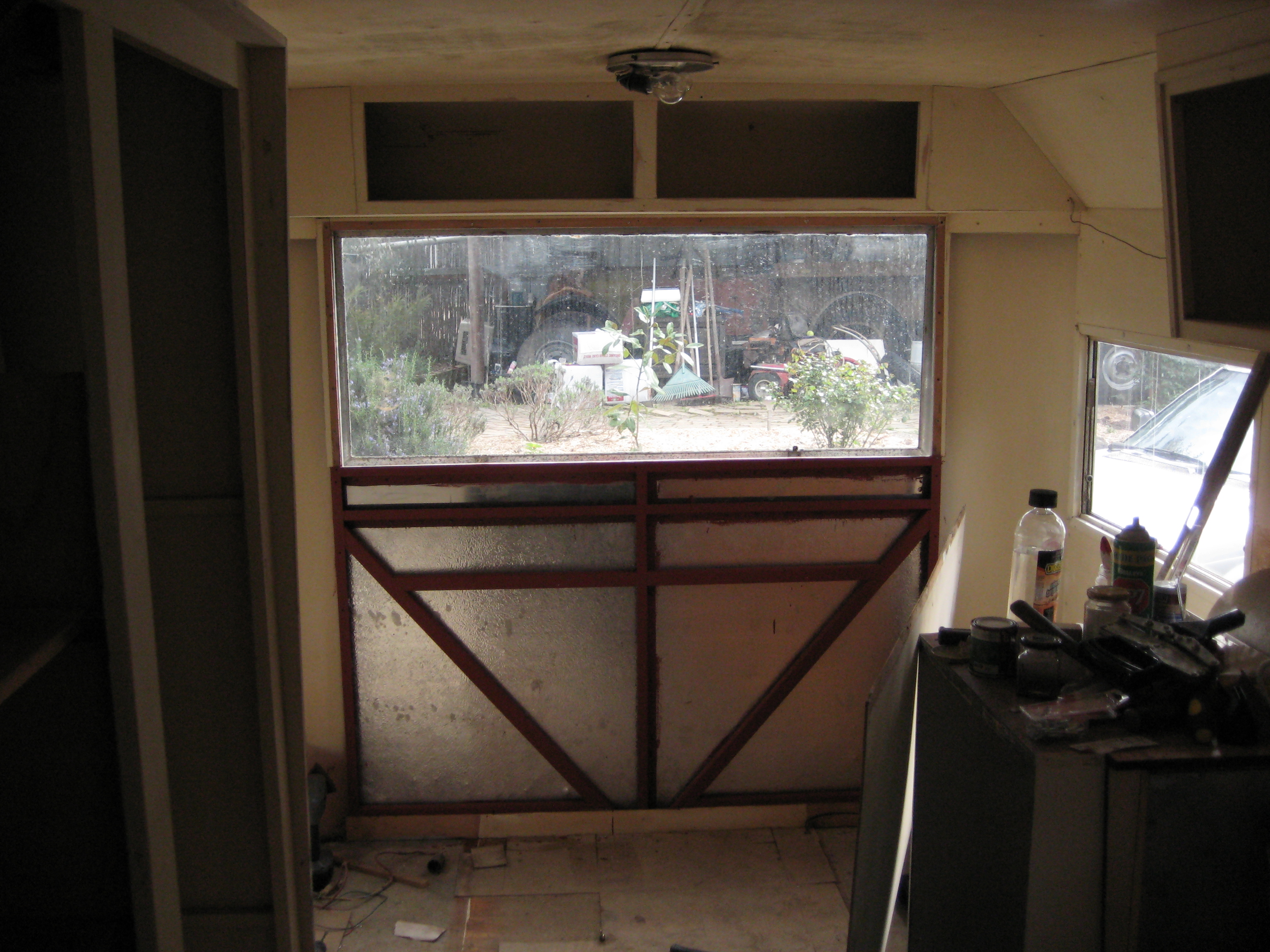
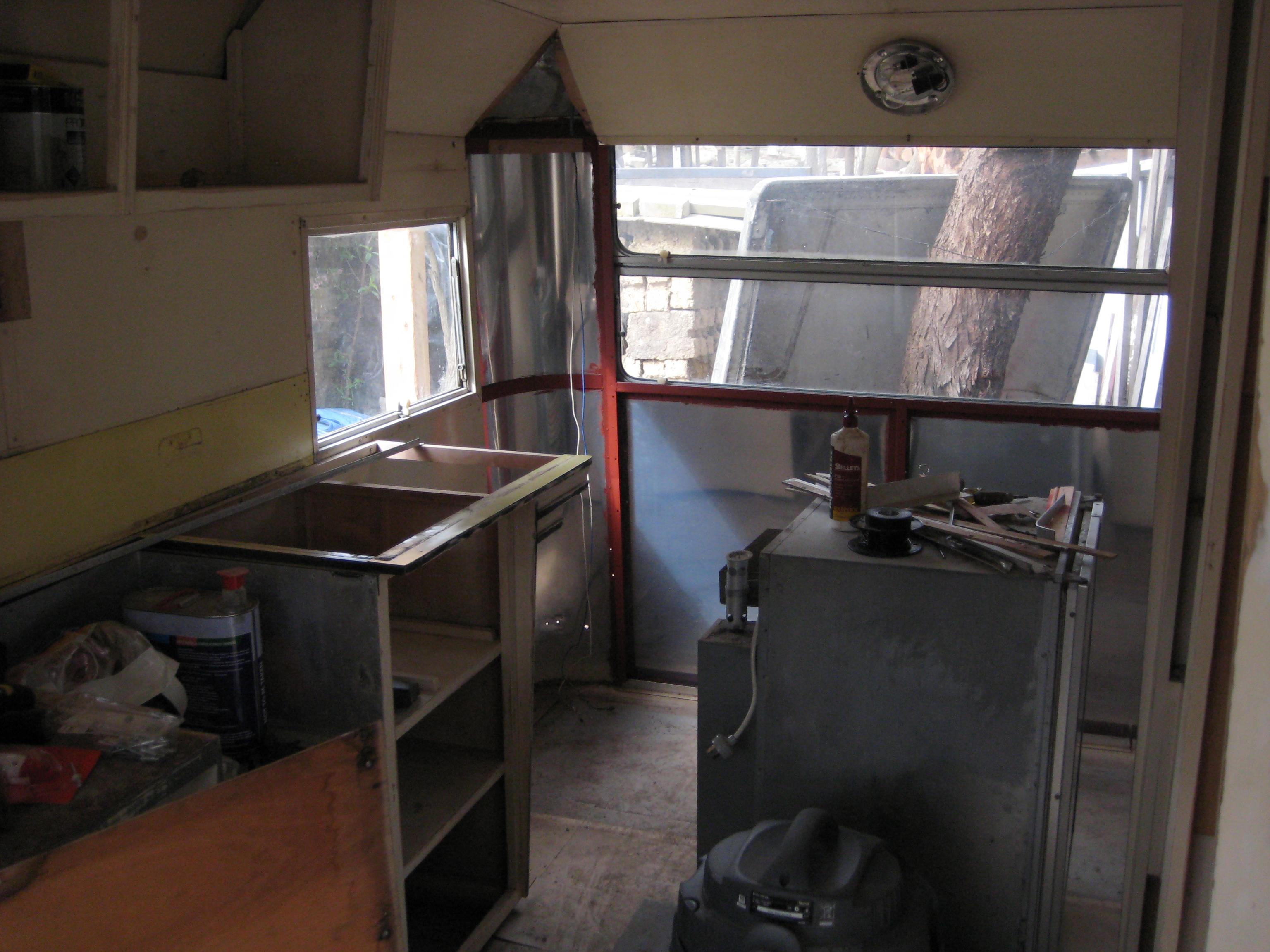
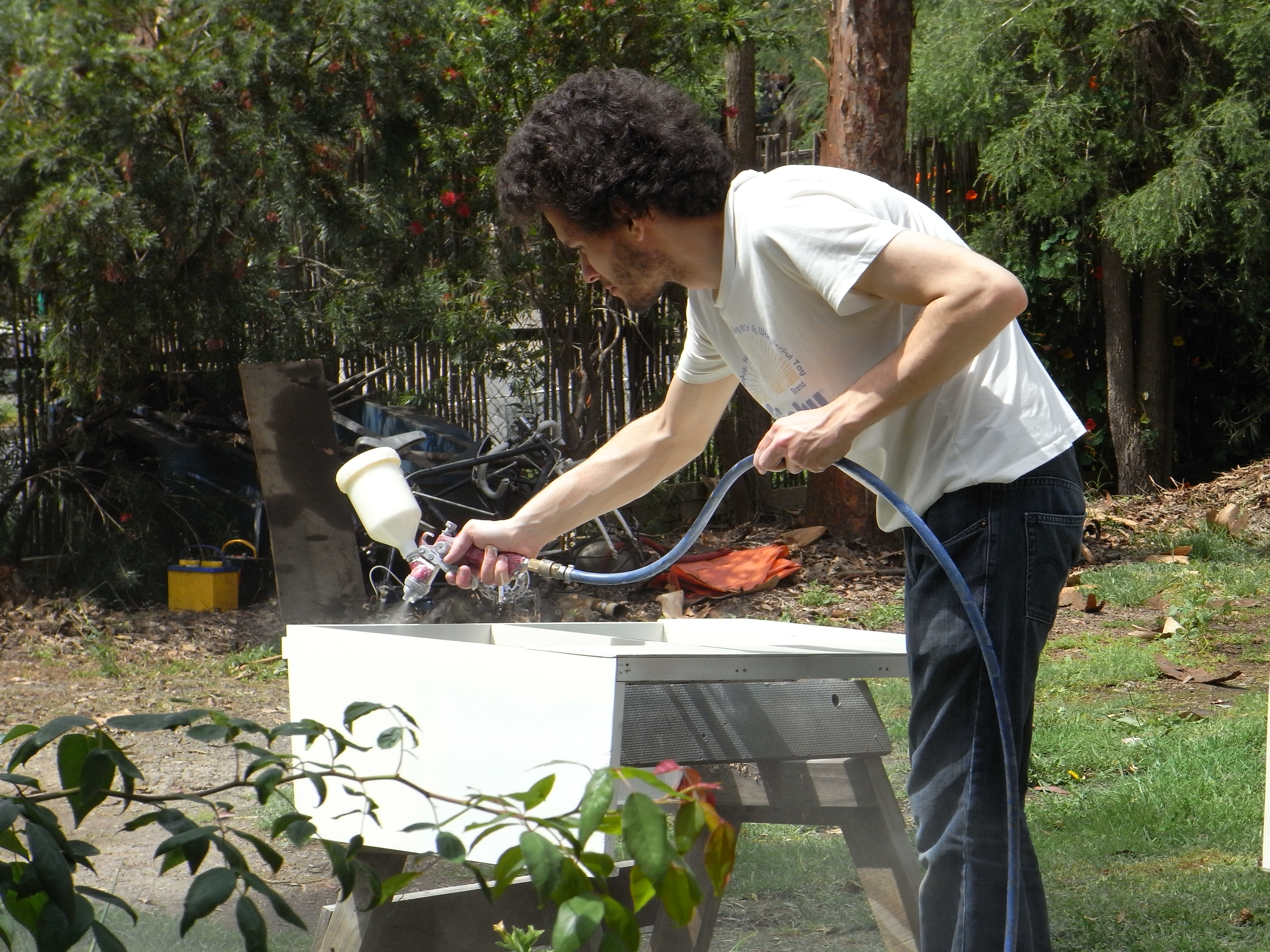
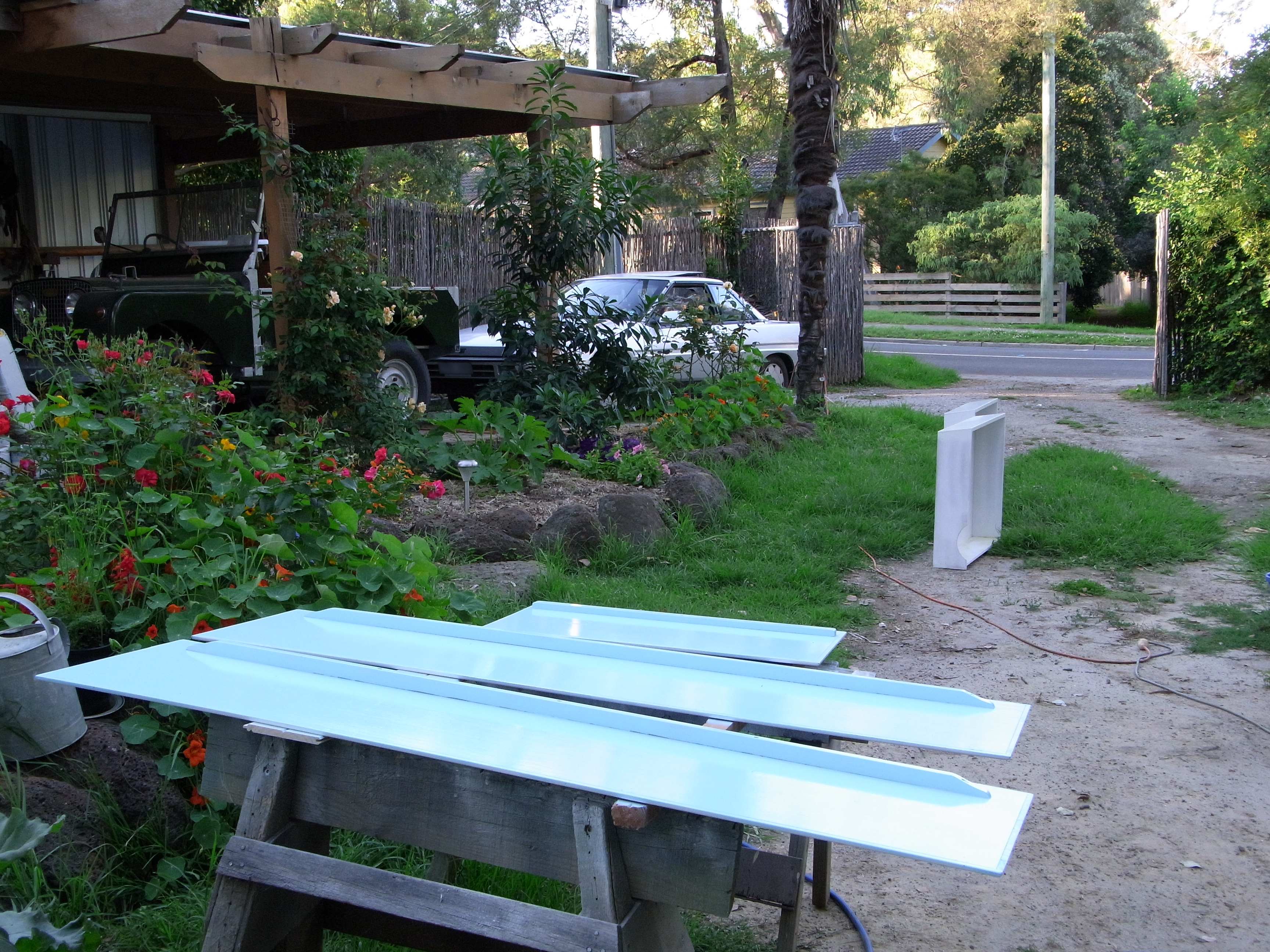
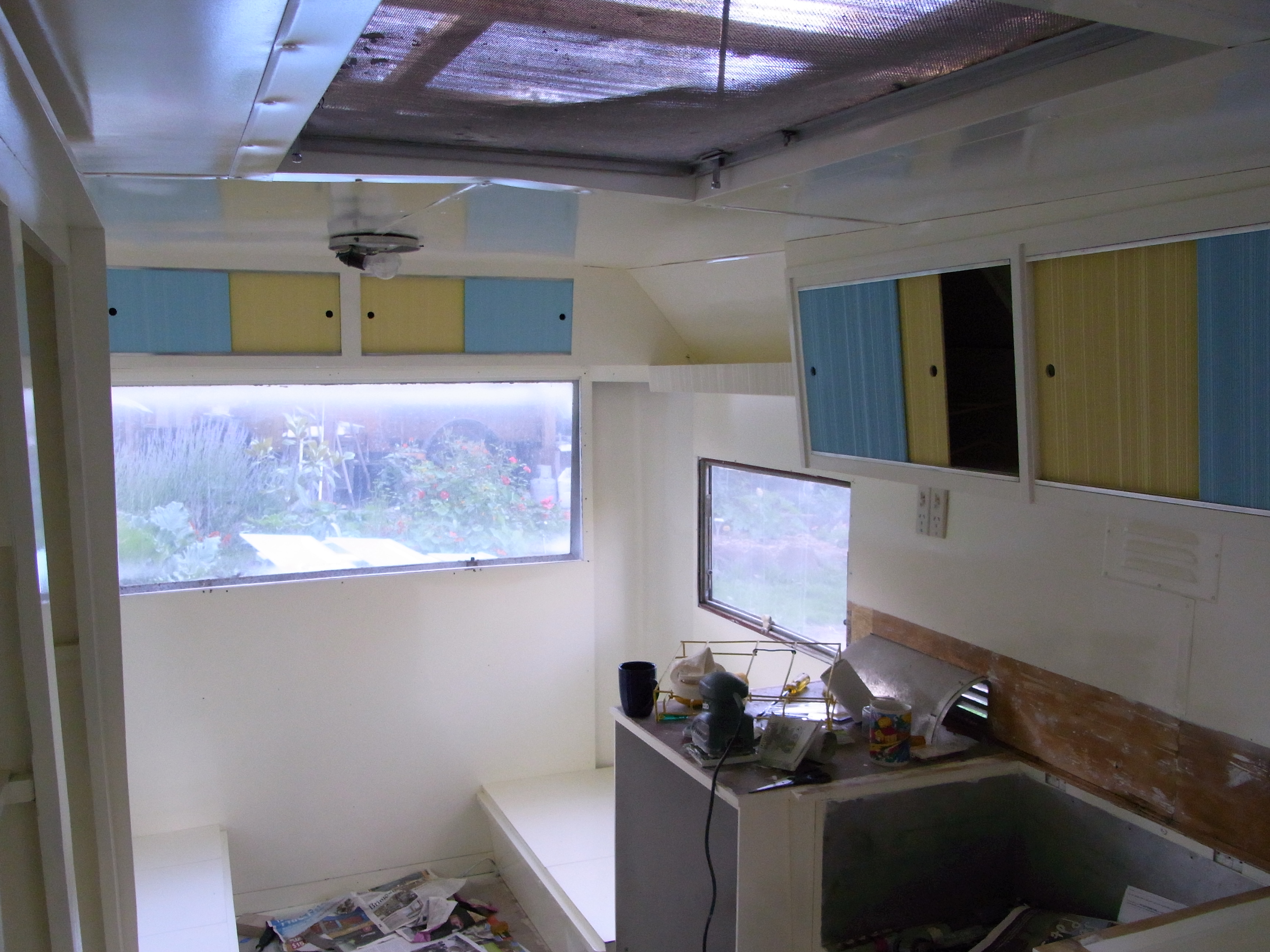
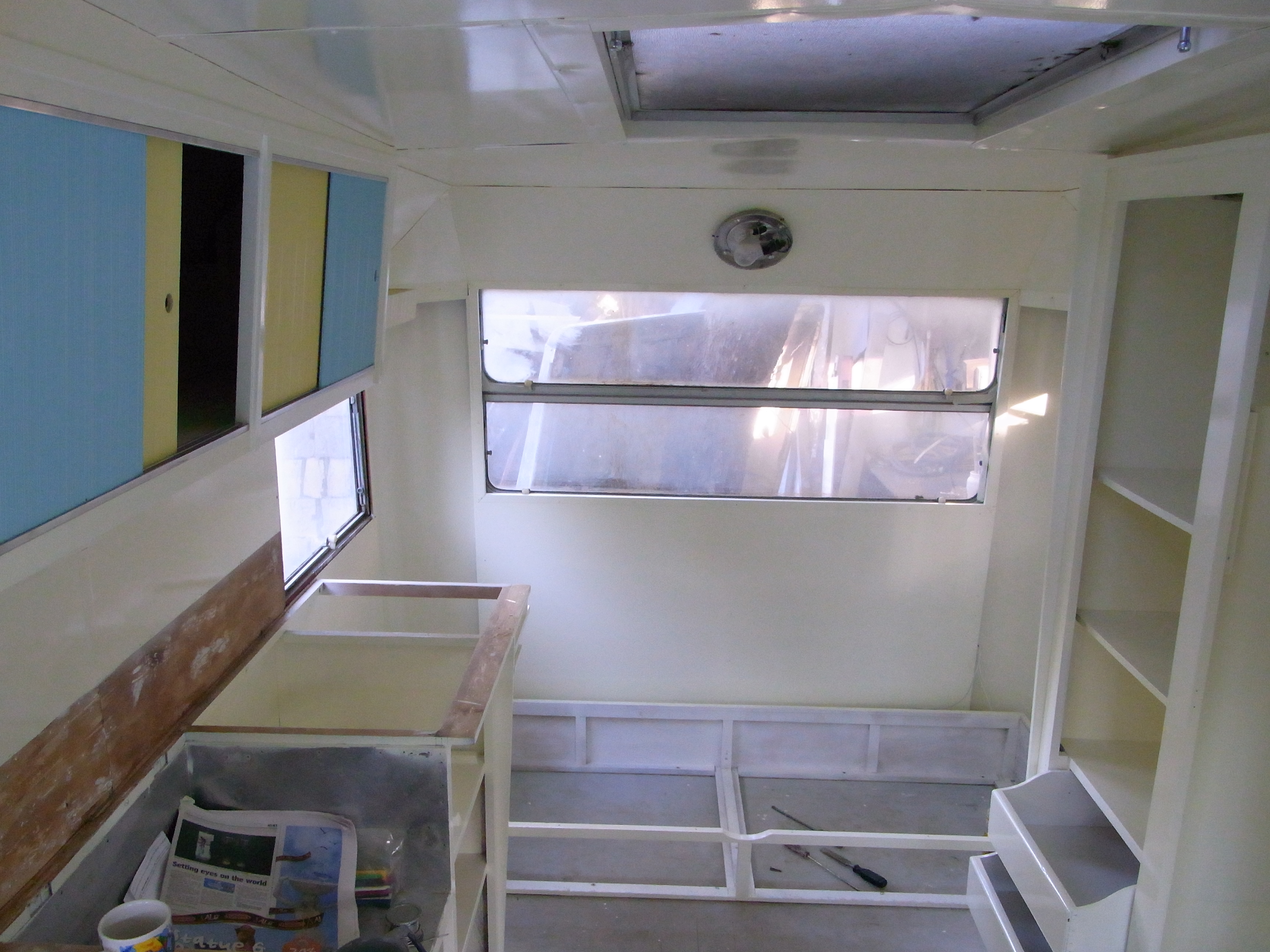
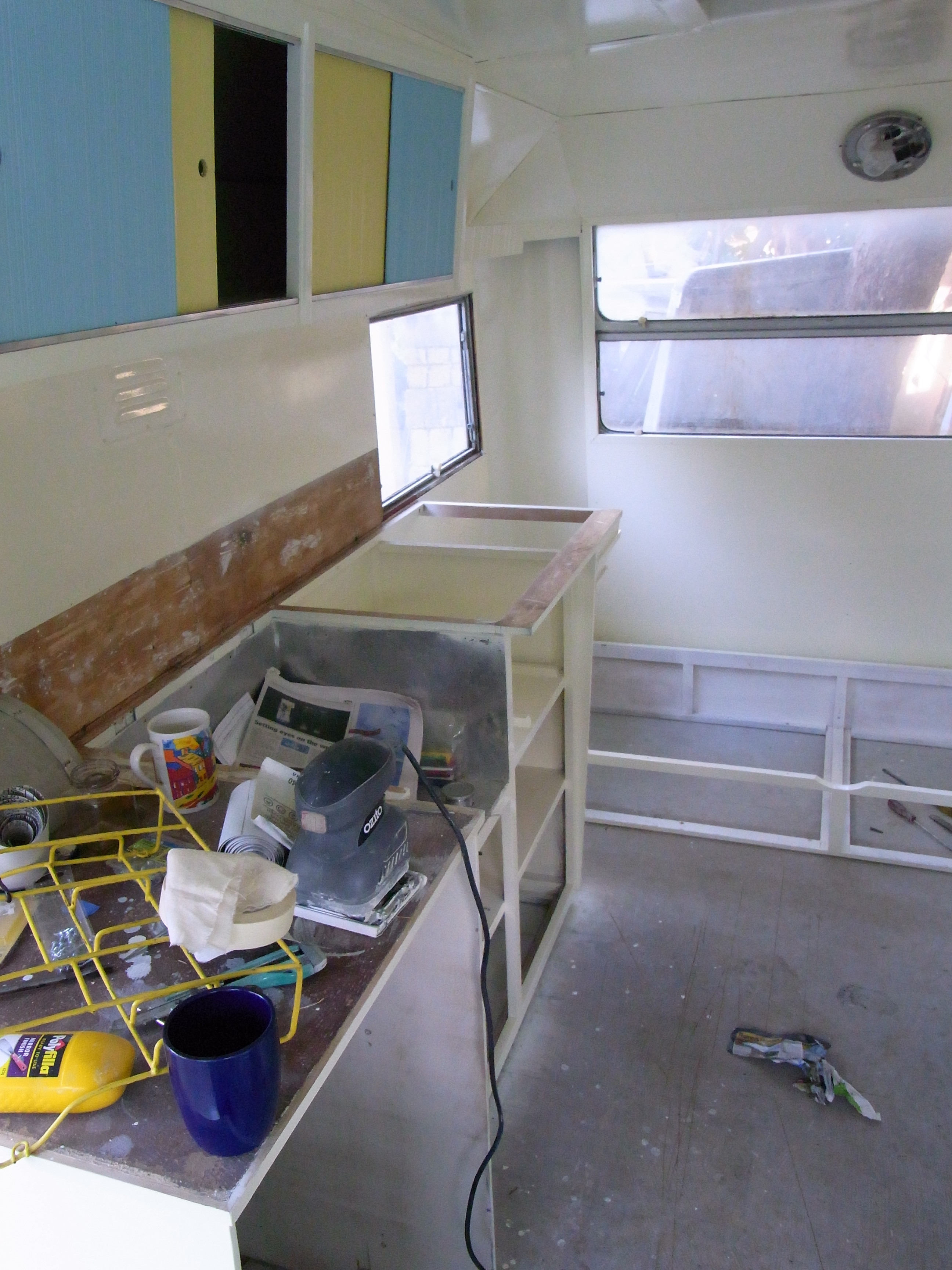
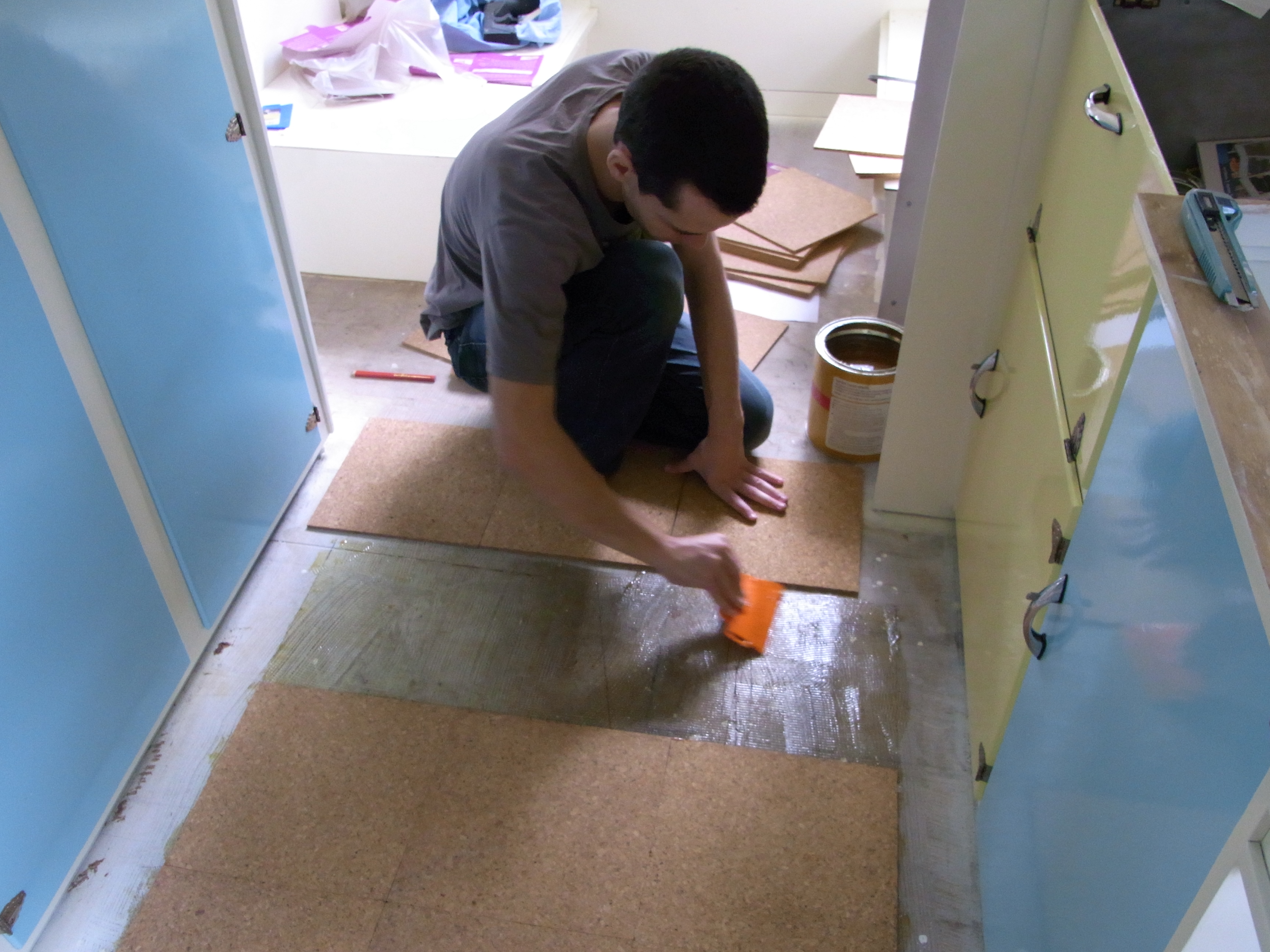
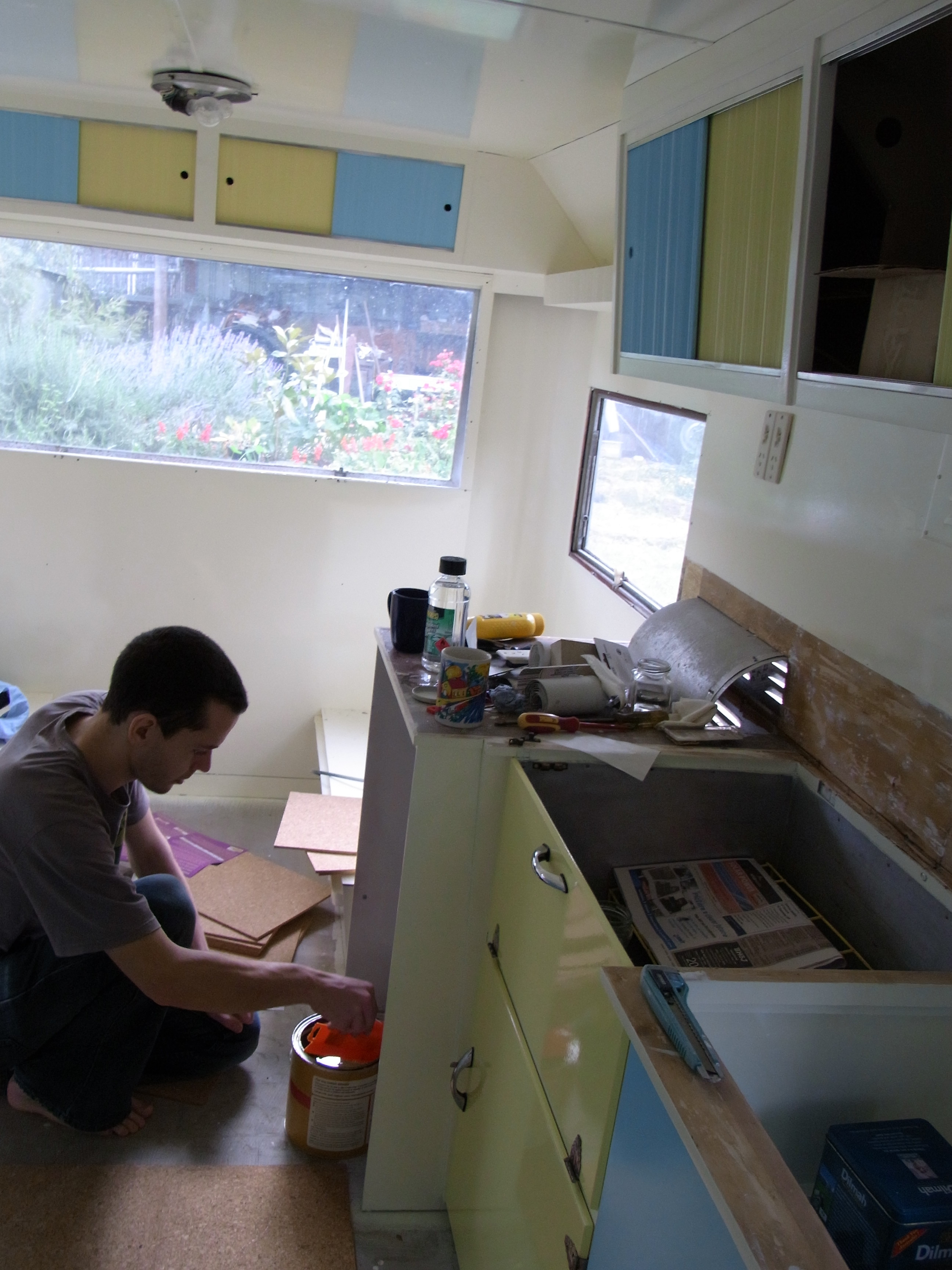
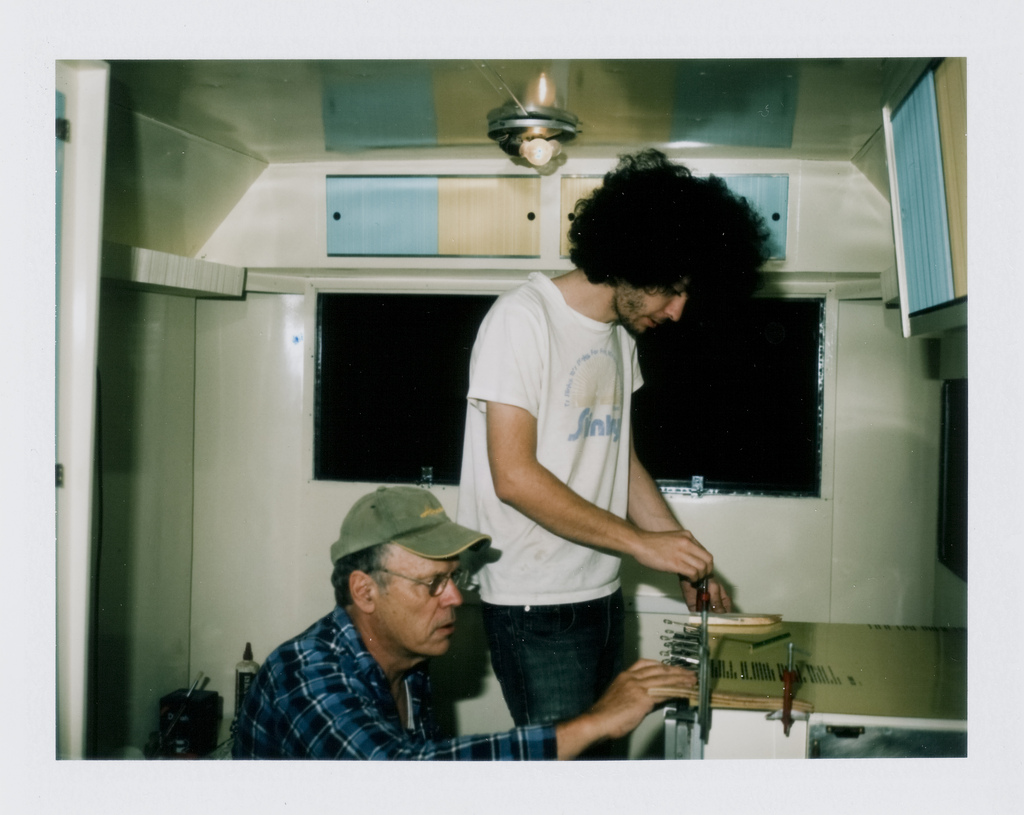






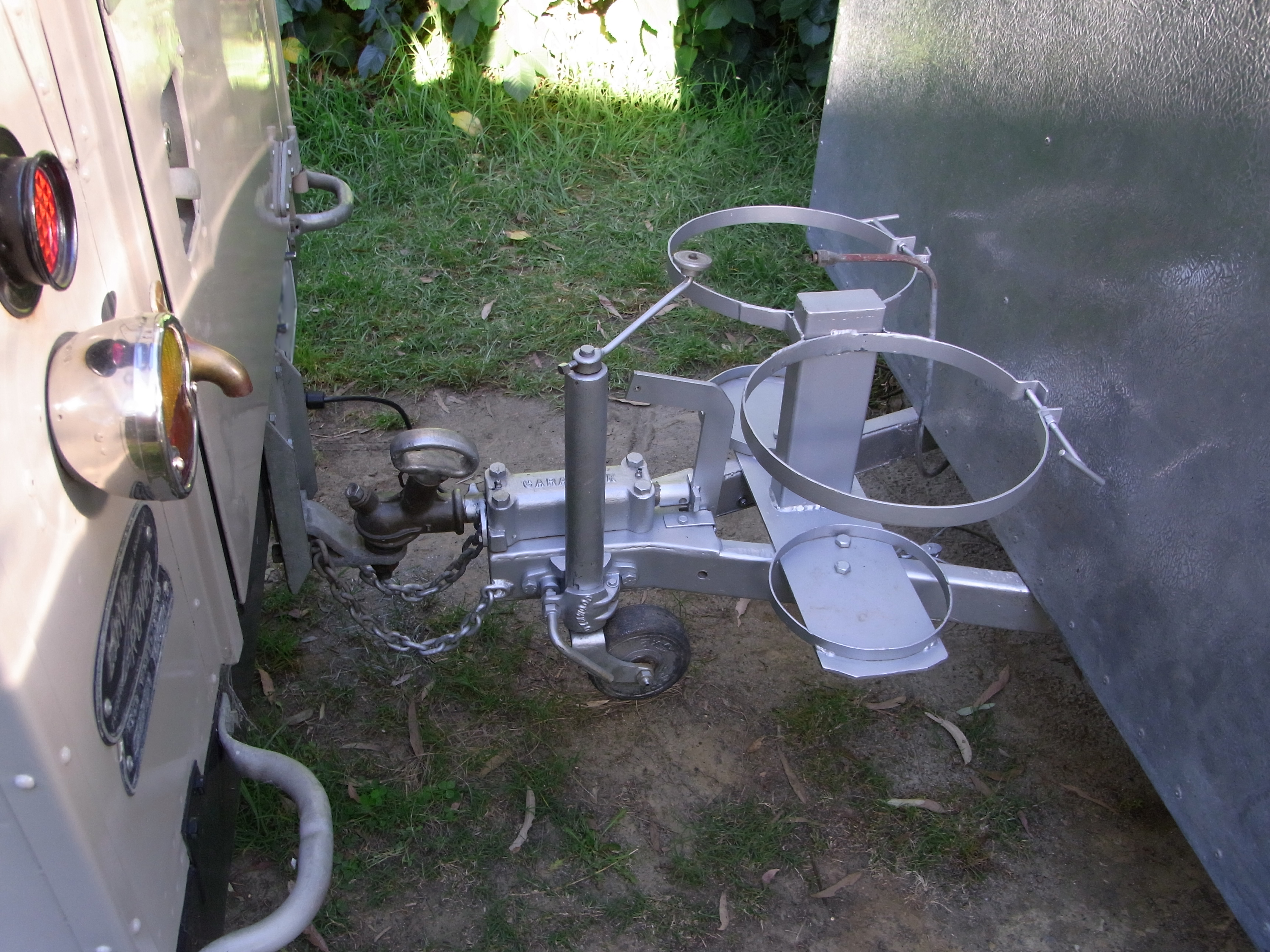


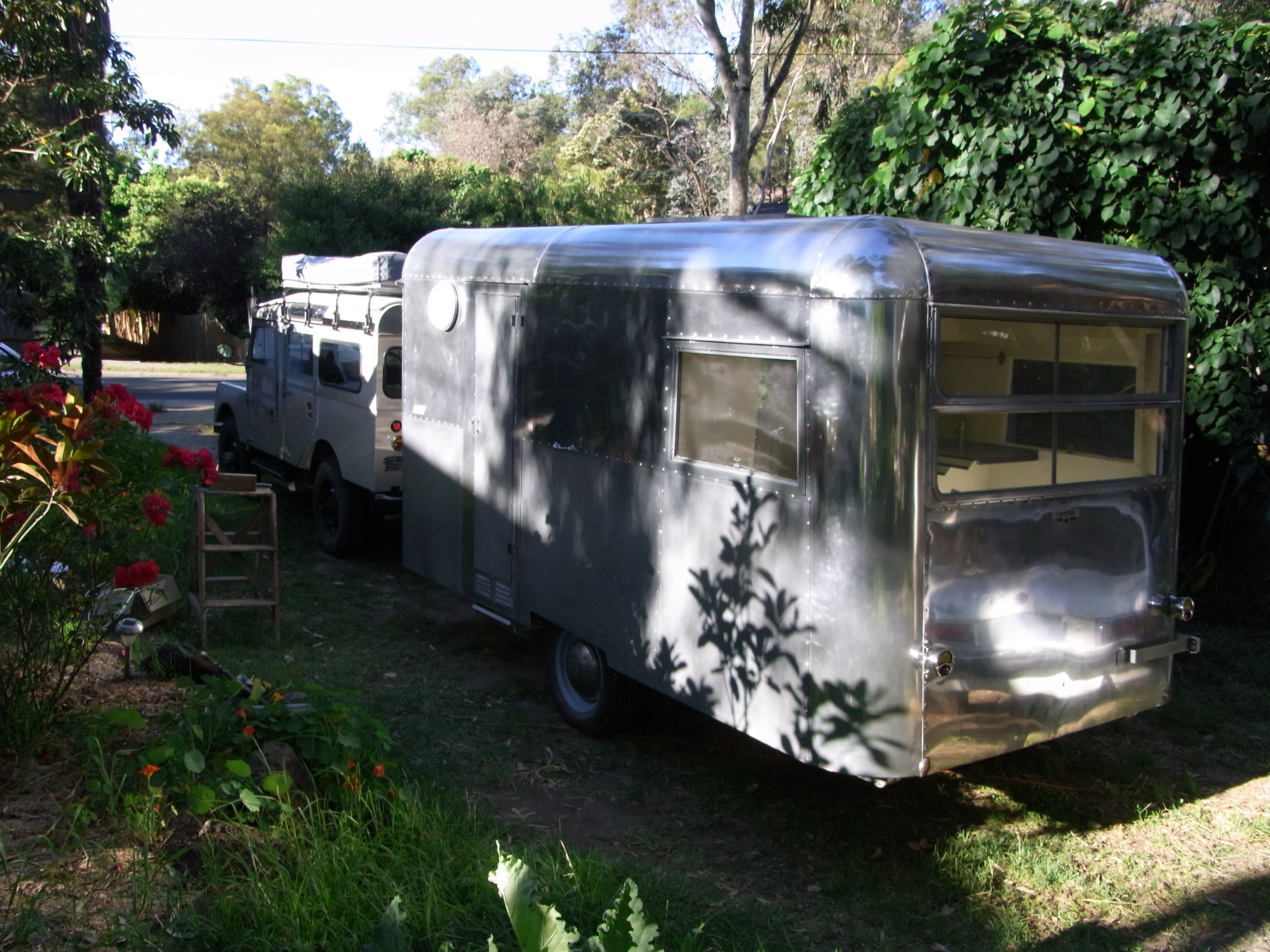







I love the look of your van – congrats! We are presently doing up an old Carapark van similar but smaller than yours. Ours leaks like a sieve – I may have to replace a lot of roof rivets in time – how did you manage to prevent water ingress once the butyl mastic seals between plates hardened..? I don’t wish to entirely delaminate our van at this point in time…. anyhow fab work and very inspiring.
Cheers,
Steve
Luckily it looked like the previous owner had resealed the whole caravan back in the day with something that was still very sticky and pliable. I was dreading having to reseal it too. But I know from a friend who has an Airstream that there is a product called Captain Tolley’s Creeping Crack Cure which is good for getting into hairline cracks in the old mastic. Other people use grey Sikaflex and apply a tiny bead along the seams to stop bigger leaks. I’d love to see some pictures of your van 🙂